Notes
Photo Ops and Staging: Beyond White House Access, the Larger Issue is What We Have Access To
(South Africans cheers President Obama waits in a tunnel at the soccer stadium before taking the state to speak at Nelson Mandela’s memorial service. (Official White House Photo by Pete Souza).
Media representatives and White House officials have started a series of meetings to discuss photographers’ access to the President. But it is unlikely that the bigger issue was on the table – access to what? If media organizations want to give us open journalism that pulls back the curtain on the theatre of politics, they have to use this moment to question the centrality of the photo op in the presentation of politics.
President Obama’s recent trip to the Nelson Mandela memorial service gave us another glimpse into what is at stake in the access issue. These two photos from Pete Souza and Stephen Crowley show both that some independent access is still possible, but that access may not produce radically different images. Souza captures, in his familiar style, the President silhouetted from behind, while Crowley records the crowd looking down into the same tunnel, with the arrangement and colour of the umbrellas on the left suggesting he is positioned only a yard or two in front of Obama.
On the flight to South Africa, with the President accompanied by the Bushes and Hilary Clinton, the access dispute was more evident. CBS News White House Correspondent Mark Knoller tweeted that:
“Press photographers in the Air Force One pool on flights to/from South Africa were given no oppty to photograph Presidents Obama & Bush.”
(Dec. 10, 2013. Attendees look down into a stadium entrance at the state memorial service for former South African President Nelson Mandela in the Soweto township of Johannesburg. Stephen Crowley – New York Times/Redux)
Regardless of their thirst for access, media organizations lapped up the White House provide images of the two presidents together, questioning their ability to support their protest with sanctions.
The media’s grievances have been stated strongly, with AP Vice President and Director of Photography Santiago Lyon calling White House provided pictures “visual press releases” that amount to little more than “propaganda.” Given the transformations of the new media economy, no administration now or in the future is going to forgo the opportunity to be its own broadcaster and publisher. Politicians have always wanted to bypass the gatekeepers and get their message direct to the public. The televised address from the Oval Office, or the live radio show in preference to the written journalists interview, are ways in which politicians seek to maximise control of their image. Now the platforms and tools have proliferated, and leaders as dorkish as former Australian Prime Minister Kevin Rudd or evil as Syria’s Assad use Instagram accounts to offer their own visual account.
There is obvious merit to the substance of the media’s protests to the Obama administration. That there should be an “independent view of important functions of the Executive Branch of government” is an unimpeachable principle. But the debate cannot end there.
Access is a necessary but not sufficient condition for that independent view. Access is not a value in itself. Access does not, and historically has not, guaranteed a critical, visual account of politics. Yes, a critical account requires some access to the events and people to be recorded, but the larger question is what will image makers and editors do with that access?
In the midst of this controversy the White House released a picture of photographers recording a bill signing in the Oval Office. Many, including BagNewsNotes, took the release as a provocation to show ongoing access. Moments like this were well described by former White House photo editor Mike Davis:
Six highly skilled, professional photographers dash into the Oval Office, a sense of practiced urgency in their assessment of how to make the most telling photo of the president, in about a minute, as he signs a document or chats with someone before continuing the real business of his job.
Then the photographers are quickly ushered out to wait for the next historic event. They are members of the White House Photo Pool doing what’s called “a spray” — arguably the least desirable type of presidential photo-op.
Maybe this image was a provocation, but I read it differently. I read it in terms of the event the media wants to access, the photo op of the President at work in the Oval Office (something emphasized by the AP). Of course these moments need to be recorded, and that takes some access, but is pressing for “the spray” to be made up of a large number of independent photographers (as David Hume Kennerly argued where the real fight should be? Christopher Morris proposed that a “pool photographer should be given special access for the day, basically to shadow the White House chief photographer, for let’s say 50 percent of the day or as the President’s schedule allows.” Will such access alone be the sufficient condition for critical visual journalism?
The juxtaposition of two photos in the New York Times article, “Photographers Protest White House Restrictions,” raises further questions about what is at stake in this controversy.
Souza’s privileged position got him the intimate family holiday portrait of the President swimming with his daughter, while restrictions on Doug Mills meant he was reduced to a long shot of the Obama’s lunching on a balcony. As this MSNBC report comparing White House imagery and independent pictures makes clear, Souza’s position does give him consistently cleaner and more intimate portrayals.
But do these cleaner, more intimate pictures offer a radically different image from the independent ones? How much better off would we be if Mills had been able to take the Souza shot? Would an independently shot, intimate family portrait be qualitatively different to one provided by the White House? Or would it be a case of independent journalism becoming complicit in the propaganda it wants to rightly resist? Doug Mills is right in this respect: the White House images are “all about controlling the image and putting the president in the best light…There’s no chance for a gaffe, or a bad hair day, or a sour expression, or much spontaneity when photographs are subject to approval by the presidential gatekeepers.” However, the controversy surrounding Michelle Obama’s sour expression in the now infamous Presidential Mandela ‘selfie’ shows, capturing such moments might not lead to the truth either.
It is worth noting that the role of the White House photographer began in Lyndon Johnson’s administration, and came about because LBJ desired the photogenic public image that independent photographers had given John F. Kennedy, including now famous photographs like George Tames “The Loneliest Job” or Alan Stanley Tretick’s “John F. Kennedy Jr. under the Resolute Desk.” Access may have been easier, independent photographers may have taken the shots, but the propaganda value was at least as great as that produced in today’s social media feeds.
All this makes clear that the larger and more important issue has to be the photo op and how to report it visually. Photo ops are themselves, even before being photographed, moments of sanitization, reducing politics to theatre, regardless of whether they are photographed by independent or partisans. So much of the photography of politics involves a reciprocal staging – the event is staged so that an image can then be made without which the event would not exist – that what we need is a visual means of pulling back the curtain to see the event’s construction.
(A photograph of goats on a lawn sign directs reporters to where goats will be released at Congressional Cemetery in Washington, on Aug. 7, 2013. More than 100 goats will be taking over Washington’s Historic Congressional Cemetery to help clean up brush in an area away from the graves. The goats will graze 24 hours a day for six days to eliminate vines, poison ivy and weeds, while also ‘fertilizing the ground’. Charles Dharapak/Associated Press).
One thing we need are images that address the construction of the image, including pictures showing photographers in the photo, the set-up of the photo-op, or using particular visual strategies such as different angles, depth of field, and framing. We see them from time to time – Kiku Adatto’s 2008 book Picture Perfect: Life in the Age of the Photo Op argues they have been published from the early 1990s onwards – but they need to be the norm rather than the exception if we want the value of access to be realised. To situate the photo-op photographers can call attention to the peripheral elements that help make the scripted show. Campaign photos that show candidates speaking to small crowds in large venues (here or here) is one good example. David Burnett’s “Larry King, Clinton & Gore, and the Hair” is a great picture of the pre-show ritual, and Charles Dharapak’s Instagrams of Washington photo ops show the political rituals.
What is interesting about Dharapak’s images is that he makes them on the side with his iPhone while producing standard news imagery with his DSLR. We need that relationship changed so that the subject and style of his Instagram’s are more central to visual political coverage. This is where the professional can potentially give us so much more than amateur – using their experience and knowledge of the photo op they can craft unique images that reveal more than the standard news snap.
The current antagonism between photographers and the White House needs to be broadened beyond the simple question of access. Yes, we should argue for open government and the independent coverage of “newsworthy activities of public significance.” That should be backed by media organisations refusing to run official images provided by the White House when independent access would previously have been given. But access cannot be a solution in itself. Media organizations should always ask, what are we being given access to? It is time to look at the bigger picture, and make the photo-op as much the subject, so we have a visual record of how events and issues are managed and staged.
— David Campbell
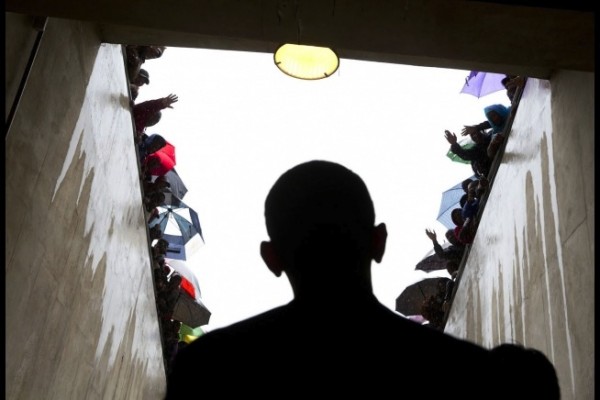
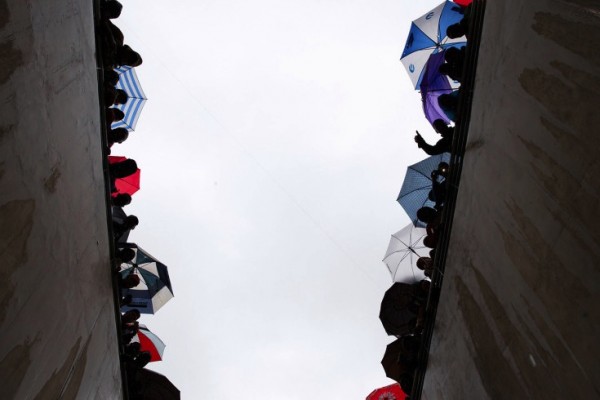
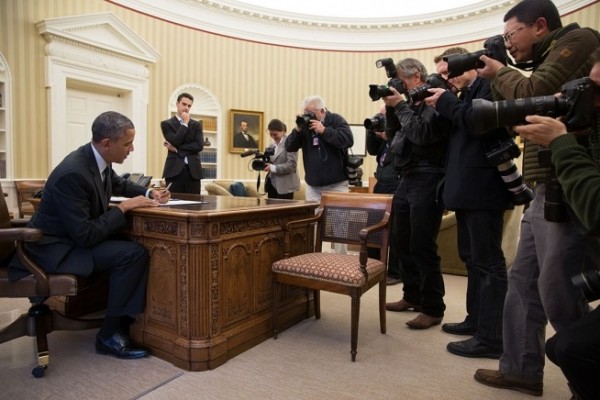
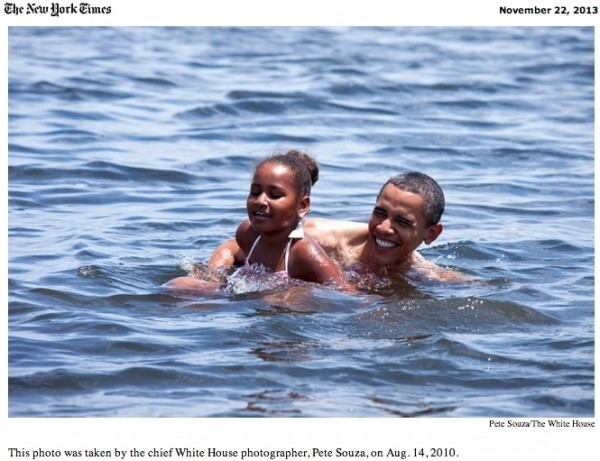
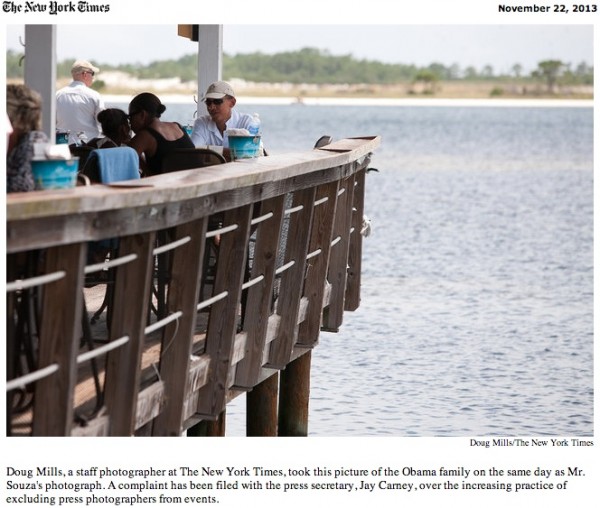
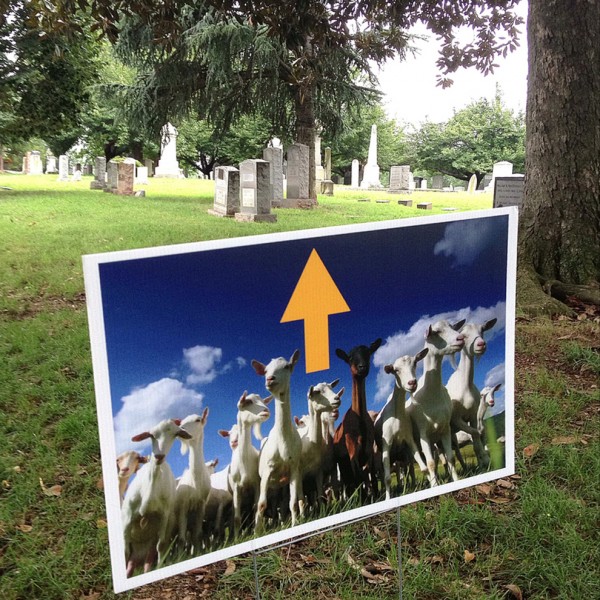
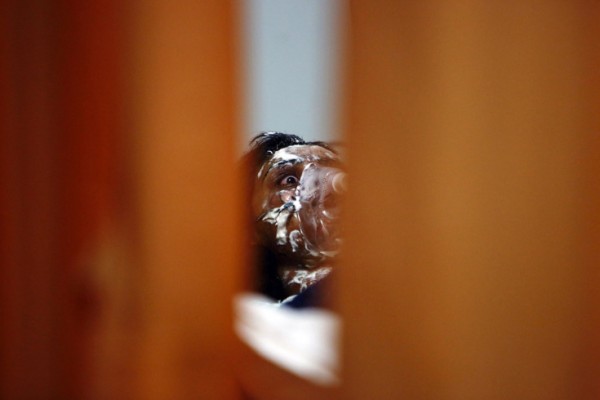

Reactions
Comments Powered by Disqus